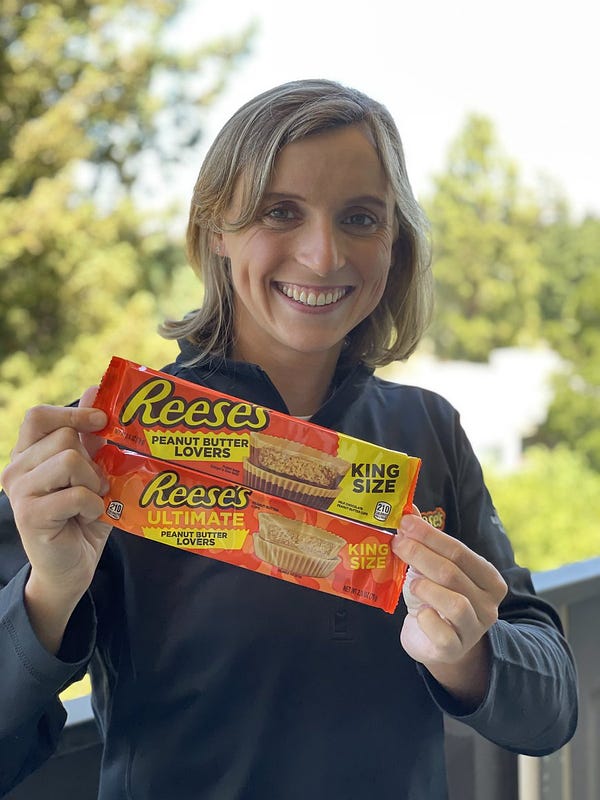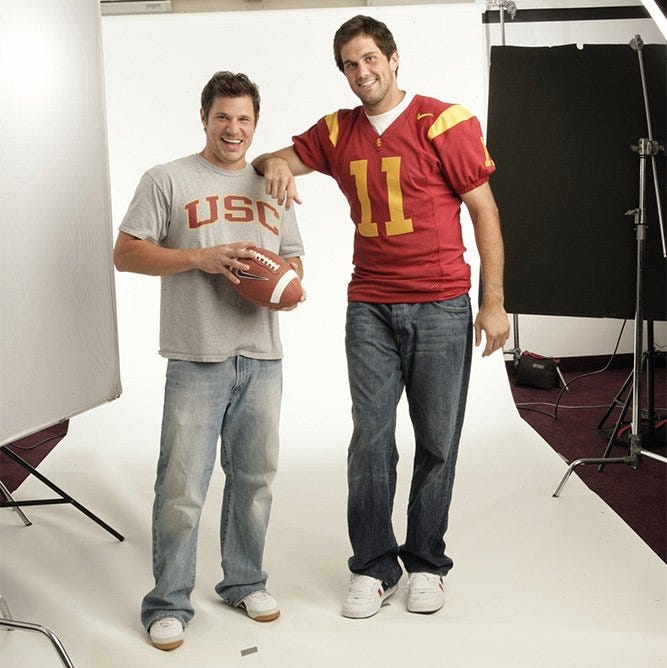The Press Break Q&A: Phoenix Suns Breakout; More NIL Discussion
The circumstances that gave us this particular summer are not circumstances I hope to ever repeat — here’s where I plead that everyone get vaccinated, and encourage those in your life to do likewise! — but I am appreciating this minor silver lining from the pandemic year.
Normally, this week would have marked the beginning of the Dog Days; those post-Fourth of July summer weeks devoid of much interesting in sports. But, because of COVID-19’s impact on the NBA schedule, we’re in the middle of an unpredictable and exciting Playoffs run culminating in the Finals.
Before (or after, your choice) proceeding with this week’s Q&A, please give a look at last week’s dive into the notorious Bucks-Suns coin flip that shaped the fledgling years of both organizations.

The Greatest Show on Turf bears some resemblance to the current Phoenix Suns, no doubt. Both are organizations with historic success, but endured decade-long periods of futility before unexpectedly emerging in their leagues’ championship rounds.
The most striking similarity to the 1999 St. Louis Rams and 2021 Suns is ownership. Both the Rams, with Georgia Frontiere, and the Suns, with Robert Sarver, owe their futility before breaking out to wretched ownership.
Just as winning Super Bowl XXXIV didn’t change the DNA of the Frontiere-owned Rams, which regressed backed to the cellar shortly after losing Super Bowl XXXVI, the Finals won’t necessarily mark the beginning of a new golden age for the Suns.
Remember, Phoenix was a missed box-out away from taking a 3-2 lead heading home in the 2010 Western Conference Finals. The organization could have, should have parlayed its closest flirtation with the Finals in 17 years into something. Sarver instead worked against the wishes of general manager Steve Kerr, blowing up the roster for the sake of cost-cutting, and beginning an 11-year downturn that was unprecedented in the history of a previously perennial winner.
Devin Booker, Deandre Ayton and Mikal Bridges form an outstanding, young nucleus, but I don’t trust Sarver. He’s given no one reason to trust him. The situation doesn’t feel markedly different from the Rams losing their own conference-title game in 1989, fading into irrelevance for a decade, hitting a brief bright spot with the Greatest Show on Turf, then regressing for another decade.
Now, with those similarities laid out, I posit another Kurt Warner-led comparison to these Suns: the 2008 Arizona Cardinals. It’s not a one-to-one comparison, but Warner — at an advanced stage in his career — played MVP-caliber football and nurtured a young, hungry and talented roster around him to the cusp of a championship.
That should sound familiar, but it’s akin to Chris Paul’s tenure in Phoenix. Again, not a one-to-one comparison: Paul endured some underwhelming time in Houston, but bounced back spectacularly leading the Thunder in 2019-20 and never regressed to the depths Warner endured at the end of his Rams career or with the New York Giants.
However, both solidified their places in sports history with outstanding, MVP-quality seasons in the desert.
One last comparison: the 2010 Chicago Blackhawks. I may be somewhat out of depth on this parallel, but consider that Chicago is crazy for the Blackhawks in the same way Phoenix is for the Suns. Both organizations were sabotaged by wretched ownership for much longer than the fan bases deserved.
Both came roaring back, somewhat unexpectedly, on the strength of a young lineup. You’ve got Booker as the Patrick Kane, Ayton as the Jonathan Toews and Paul as the Marian Hossa, and a breakout 2008-09 for Chicago as the parallel to Phoenix’s undefeated Bubble.

We’re now a week into the Brave New World of Name Image Likeness rules in college sports, and have already seen some remarkable deals proposed and signed. American Top Team boss Dan Lambert’s offer of sponsorship money to every scholarship player at the University of Miami is truly a blockbuster (and comes the same week Lambert cut an outstanding promo on All Elite Wrestling’s flagship Dynamite program).


I’ve long been a proponent of NIL regulations as a means of better compensating college athletes without falling into the perilous trap of making them university employees, but even I have been shocked at how lucrative sponsorship opportunities are already proving to be.
The timing coinciding with the NBA draft declaration deadline may be a huge boon for the 2021-22 college basketball season. The college game was already seeing benefits from delaying the deadline midway through the 2010s, with noteworthy names like Buddy Hield returning after getting thorough draft evaluations then blowing up in their final college seasons.
Add the prospect of being compensated while improving draft stock, and I suspect the college game will benefit even further. In this column on the 2001 NBA draft class, I speculated the financial hardship prospects like Tyson Chandler and Eddy Curry endured helped take the decision of going to college or the NBA away from them to some extent.
This generation has more options with the G League, and players like Brandon Jennings and Emmanuel Mudiay going to Europe and China in the years since 2001. NIL adds yet another, and what I feel will prove to be the best option with continued college development.
I won’t go into every reason playing at a quality NCAA program offers a better path than the G League, EuroLeague or Australian NBL. That’s its own, separate column. Nor will I say definitively that NIL is the reason NBA-caliber prospects like Isaiah Mobley, Johnny Juzang and Kendric Davis are back for the 2021-22 college season — though I can’t wait to ask some of these players eventually how the new rule factored into their process.
But I did find this tweet from Geo Baker, the Rutgers standout who was vocal in his push for compensation reforms last season, quite illuminating.


Here goes. I’m sure I’m off-base
Arizona: One of either Sean Elliott or Steve Kerr comes to mind. The two were the basketball program’s first celebrities, and responsible for turning the university into a “Basketball School.” Elliott was also a Tucson-raised athlete, playing at Cholla High, while the affable Kerr remains a fan favorite to this day for his natural charisma.
However, my time as an undergrad at UA overlapped with a portion of Jennie Finch’s, and I can say definitively she would have had local businesses backing up Brinks trucks to her residence. Attractive, charismatic and the best in the world at her sport, she would have been the ideal spokesperson.
Arizona State: Anthony Robles’ inspirational rise to fame a decade ago captured the nation’s imagination. His remarkable story, overcoming his physical handicap to become a three-time All-American wrestler, deserved even greater acclaim than what it received.
Cal: Allison Stokke entered national consciousness as a social-media sensation, and remains a highly visible figure online. Few athletes can leverage channels like Instagram as effectively as Stokke. She also worked with husband Ricky Fowler on producing the excellent Netflix docuseries Basketball or Nothing, suggesting she would have been outstanding at navigating traditional media opportunities while on the Cal track team, too.
Colorado: Kordell Stewart shared the backfield with Heisman Trophy winner Rashaan Salaam, but Stewart was arguably the face of college football in 1994. The Miracle at Michigan remains one of the most breathtaking plays in my time following the sport, and was the jumping-off point for Stewart’s breakthrough to national prominence.
His natural charm dealing with media then and ahead-of-its-time playmaking could have made Stewart a smash-hit in his CU days.
Oregon: Steve Prefontaine’s legacy still resonates more profoundly than that of any other Oregon athlete, almost 50 years after his time with the Ducks ended. Prefontaine died tragically at just 24, shortly after his performance at the 1972 Munich Olympics made him a track and field legend.
Oregon State: College basketball transformed in the 1980s, adopting a high-tempo style of play and TV embracing big personalities that reflected societal changes. Georgetown and UNLV reflected the budding hip-hop culture of the ‘80s, and Gary Payton’s energy at Oregon State shared vibes with the fledgling Bay Area scene that produced Too $hort and Digital Underground around the same time.
Too $hort even shouts out Payton on the track “Just Another Day,” recorded two years after GP left Corvallis. Payton’s Oakland-inspired trash talk and persona would have been a lucrative hit for a fast-growing market at the time.
Stanford: This might be the toughest choice of any university, given Stanford’s excellence at such a diverse range of athletics. Katie Ledecky is currently one of the most high-profile athletes internationally and an outstanding spokesperson.


Tiger Woods gets the nod from me, however. Woods transcended sport in a way no one since Michael Jordan before him had. He was already a celebrity by the time he joined the Cardinal golf team, and the marketing machine that made him the most famous athlete of the 2000s could have elevated him to unprecedented heights as a collegiate pitchman in the ‘90s.
UCLA: Westwood has been home to so many standout athletes in so many sports, it’s difficult pinpointing a single nominee. John Wooden’s basketball dynasty elevated the entire sport, however, so it’s worth starting there.
Kareem Abdul-Jabbar remains arguably the greatest college basketball player of all-time, and as noted last week, broke into films after joining the Los Angeles Lakers. I like to envision the former Lew Alcindor showing up as a villain in On Her Majesty’s Secret Service during his Bruins career.
USC: Trojans football history is rife with superstars, so I may be selling some past legends short. Before his 1994 arrest, for example, O.J. Simpson was one of the most prominent football players in Americana, and his stardom took off from within the hallowed walls of the Coliseum.
Maybe you can chalk it up to myopia, but I’d argue no one was as much of a celebrity during their USC tenure as Matt Leinart. At a time when Snoop Dogg and Will Ferrell regularly graced the Trojans sidelines — the latter at the height of his career — Leinart was the poster child for the program. Leinart also palled around with Nick Lachey and Jessica Simpson when the two were a reality TV It Couple.
Utah: Although Keith Van Horn was arguably the third-biggest basketball star in the Beehive State at a time when Stockton and Malone were leading the Jazz to the Finals, I have to give the nod to 1988 Olympian Missy Marlowe. Gymnastics is wildly popular within the UU fan base, and Marlowe contributed to the program’s rise, bringing already established star power after her appearance in the Seoul Games.
Washington: One of the greatest teams in college football history marked the peak of Don James’ illustrious career at Washington. The 1991 Washington Huskies dominated all comes behind an overwhelming defense, and tackle Steve Emtman’s prowess on the line headlined.
Emtman was a legitimate Heisman candidate in ‘91 and one of the most fearsome players in recent college football memory. His importance to the program was evident during his career, and would have translated to myriad NIL opportunities at a time when Seattle’s burgeoning tech economy was really taking off.
Washington State: As a young boy, I remember Drew Bledsoe being a big deal. Maybe being a product of Walla Walla would have made Bledsoe the face of Cougars football; or, going back further, Mark Rypien’s prep stardom in the state and breakout career on the Palouse perhaps set the benchmark.
But before his NFL career flamed out and he ran into myriad off-field issues, Ryan Leaf was a HUGE deal in Pac-10 Country. Leaf’s march to the 1997 conference championship, flirtations with the Heisman and trip to the Rose Bowl were legendary, and made him the de facto face of Washington State sports for years to come.

I don’t necessarily think it’s coincidence that the first wave of endorsements being introduced are for athletes at Power Five programs like Auburn and Miami. However, as noted in last week’s newsletter, Fresno State women’s basketball players and social-media stars the Cavinder twins hitting it big with a Cricket Wireless deal suggests Group of Five athletes will have opportunities.
To reiterate, look to the major cities without pro sports franchises, or only a single franchise — like Orlando. Just this week, a moving company based in Miami offered sponsorship deals to the entire UCF women’s basketball team. Orlando’s a major city, but has only the Magic (the MLS doesn’t really count for the sake of this exercise).
UCF football seems like it could do quite well under the new guidelines; ditto American Athletic Conference counterpart Tulsa, or AAC basketball member Wichita State.
While Power Fives are in better position to benefit, the metro vs. rural dynamic could be the key differentiator in how NIL reshapes the landscape.





